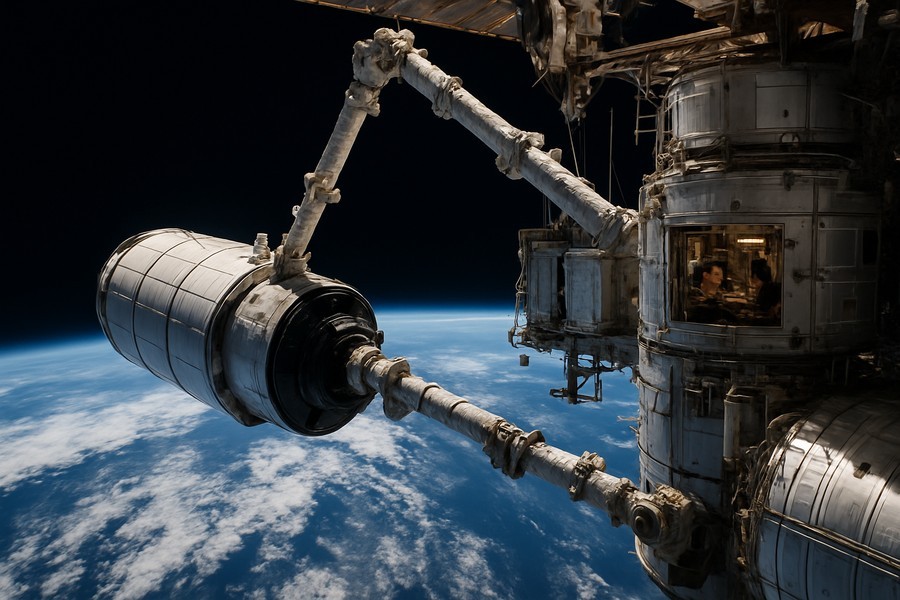
Cargo Freighter Triumphantly Reaches Space Station Despite Technical Hurdle
The successful docking of a cargo freighter at the International Space Station (ISS) was achieved recently, despite an initial software hiccup. The freighter, which was carrying over 5 tons of supplies and scientific experiments, was a day late due to this minor setback. The ISS crew, comprised of seven members, was eagerly awaiting this substantial delivery.
At the helm of the ISS's robotic arm was astronaut Jonny Kim. He skillfully operated the arm to latch onto the freighter at around 7:24 am EDT. Shortly after this, the robotic arm secured the freighter above an attachment port on the station's Unity module. A total of 16 bolts were then used to securely fasten the freighter to the ISS, creating a robust mechanical connection.
Extended Stay and Departure Plan
The cargo freighter is anticipated to stay at the ISS for up to six months. During this period, the astronauts will unload the supplies from the freighter's cargo module and subsequently fill it with waste. Upon completion of its mission, the freighter will disengage from the station and make its way towards a calculated reentry over the desolate Pacific Ocean, thus marking the end of its journey.
Mission Commencement and Unexpected Glitch
The cargo resupply mission had a timely lift-off from Florida. However, the freighter encountered a minor setback early in its journey while performing two engine burns to adjust its course towards the ISS. The main engine unexpectedly shut down earlier than planned, causing an unforeseen delay.
It was later revealed that this issue was due to the onboard software, designed to safeguard the freighter from potential malfunctions. The software abruptly halted the engine operations, although the engine itself was functioning normally. This was confirmed via data transmitted back to the mission control center.
Software Update and Successful Docking
Following a software update, the freighter autonomously navigated itself to within 30 feet of the ISS. This put it close enough for Kim to successfully extend the robotic arm and secure it.
Enhanced Cargo Capacity and Essential Supplies
This mission marked the first flight of an upgraded cargo freighter with a cargo module 5.2 feet longer than its predecessor. This extension allows for a 33 percent increase in cargo capacity. The total weight of the supplies on this mission was approximately 10,827 pounds.
The freighter was loaded with essential supplies such as food, oxygen, nitrogen, and spare parts for the station's urine processor, which plays a critical role in converting waste into potable water. The freighter also delivered a new navigation aid to be installed on the exterior of the ISS to assist future crew and cargo ships in their approach towards the station.
Scientific Experiments Aboard
Among the freighter's cargo was also research equipment for various scientific experiments. These include studying semiconductor crystal production in microgravity and testing a new method to maintain cryogenic propellants in proper condition during extended spaceflights.
